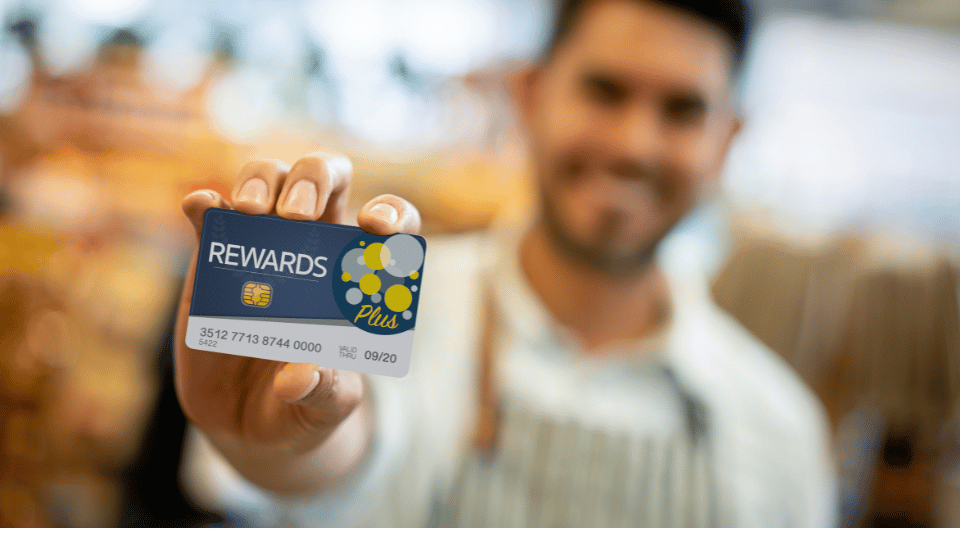The Ultimate Guide to Increasing Sales For Small Businesses
Tue | October 2024
Are you looking to boost your sales and grow your small business? Effective sales strategies are essential in today's competitive market. But it's more than just running ads or creating catchy commercials.
This guide will show you how to:
Understand your ideal customers needs and preferences to reach them effectively.
Discover sales strategies that help you increase revenue and strengthen your brand's reputation.
By the end of this guide, you'll have the tools, the knowledge, and the resources to take your sales to the next level and achieve your business goals.
Know Your Ideal Customers
Your customers are your greatest asset. Without a solid customer base, any business can fade away. Understanding who your customers are, what they need, and how to meet those needs will give your small business a competitive advantage.
An ideal customer is someone who benefits the most from your product or service. In other words, they are the person who gets the most value from what you offer. This is the customer your sales and marketing strategies should be directed at because they are more likely to return and continue using your offerings in the long run.
This is why understanding your ideal customer is crucial. It allows you to effectively target your sales efforts toward those most interested in buying your products or services. A great way to do this is by creating buyer personas, representations of the different types of customers you want to target.
Buyer personas help you "humanize" your audience by imagining their needs, behaviors, and values. Let's dive into how you can create your own buyer personas.
How to Create an Effective Buyer Persona
A buyer persona is a semi-fictional representation of your ideal customer based on research and data about your current audience. Here are some tips to help you create your own:
Research Your Current Customers: Start by gathering data about your existing customers, paying attention to demographics (age, gender, education level), geography, needs, and purchasing behaviors.
Segment Your Audience: Divide your customers into groups based on shared characteristics. For example, you might have segments like "young professionals," "busy parents," or "small restaurant business owners."
Develop Persona Profiles: Create a detailed profile for each audience segment that includes key insights from your research. Give each persona a name to make them more relatable.
Use Real Customer Data: Back up your personas with real data, such as sales patterns, social media interactions, or common questions from your customers.
Refine Your Buyer Personas Over Time: Your buyer personas should be updated as your business evolves and new data becomes available. Review and update them at least once a year or whenever significant changes occur in your market.
For additional support, check out the SemRush Buyer Persona Tool. This free tool provides templates and guiding questions to help you build personas from scratch. Once completed, you can save and share these personas with your team to ensure everyone is aligned with your target audience.

Key Sources for Understanding Your Audience
To create detailed buyer personas, you need reliable data about your customers. Here are some ways to gather this data:
Google Analytics (GA4)
If your business has a website, Google Analytics 4 (GA4) is essential for gathering valuable insights about your audience. This free tool allows you to see key information, such as your users' interests, their languages, and which cities or countries they are from.
While GA4 is a powerful resource, setting it up can take time and require some technical know-how. Fortunately, many tutorials and online courses can guide you through the setup process. If you're short on time, consider hiring a marketing professional to help you get everything up and running.
To learn more about GA4 and how to get started, check out resources like "[GA4] Introducing the Next Generation of Analytics, Google Analytics 4" or "[GA4] Setting Up Analytics on a Website or App."
Use Social Media Platforms
Facebook and Instagram offer powerful analytics tools that provide insights into your audience's age, location, and interests. If your business is on Facebook, you can use the Audience Insights tool to gather data about the people connected to your business page. You'll also be able to learn about their interests and hobbies, which can help you optimize your campaigns and achieve your sales goals.
This data can be invaluable for creating more targeted content. You can also adjust your ads to better resonate with your target audience. By tracking which posts receive the most engagement, you can identify the type of content your followers respond to and refine your strategy.
Suppose your business isn't on social media yet. In that case, the first step is to create business profiles on platforms like Facebook and Instagram. You'll need a business profile to access analytics tools. For a detailed guide on setting up these profiles, check out "Create a Facebook Page for Your Business" and "Set Up Your Instagram Business Account".
Survey Your Current Clients
If your business doesn't yet have a website, social media presence, or any online platforms, don't worry—you can still create your ideal buyer profile by leveraging one of your most valuable sources of information: your current customers.
Start by collecting direct feedback from your customers through satisfaction surveys. Tools like SurveyMonkey and Google Forms offer templates to help you easily create online forms. Depending on the features you need, these tools may have free options, or you might upgrade to a paid plan for more advanced functionality.
Use these tools to ask your customers about their preferences, needs, and experiences with your business. If you prefer a more traditional approach, you can distribute printed surveys to customers in-store. Alternatively, you can go digital by offering a QR code that links to your online survey, making it easy for customers to participate on their smartphones.
Make sure the questions you ask are relevant and give you the insights needed to better understand your customers. Keep in mind that people are often hesitant to complete surveys, as it can take up their time. To increase engagement, consider offering incentives, such as discounts, freebies, or a free item on their next visit or purchase.

Strategies to Increase Your Small Business Sales
Once you understand your ideal customers and have developed your buyer personas, you can create more personalized and effective sales strategies. Now, it's time to dive into advanced sales tactics that will maximize your sales opportunities and, as a result, improve your revenue.
1. Create a Sense of Urgency
Creating a sense of urgency is a sales tactic based on the scarcity principle—the idea that when something is rare or only available for a limited time, people tend to want it more. This tactic plays into the fear of missing out (FOMO), which drives customers to act quickly before an opportunity slips away.
Introducing urgency around your products or services can drive faster decision-making and increase sales. Let's look at a few ways to apply this strategy in different industries:
Restaurants: Imagine a restaurant offering a limited-time menu or seasonal specials. When customers know a dish is only available for a short period, they'll feel the need to visit before it's gone. Promote these specials on your social media channels, and for added impact, create countdowns to keep the offer fresh in your customers' minds.
E-commerce: For an online clothing retailer, urgency tactics like flash sales can grab customers' attention. For example, a 48-hour flash sale with a countdown—like "Only 24 hours left!"—can drive quick purchases. Similarly, low-stock alerts such as "Only 2 items left!" can create urgency and prompt customers to buy before it's too late. If your business has a website, many tools are available to easily add countdown timers and low-stock alerts.
Service-Based Businesses: Let's say you run a marketing consulting service. You can offer limited appointment slots or special service packages. Clients are more likely to book early when they see that only a few spots remain. You might offer "limited consultations at a special rate," encouraging clients to act fast to secure their spot.
Remember to use urgency tactics strategically and ethically to avoid misleading your customers. When implemented correctly, the scarcity principle can be a powerful tool for increasing sales and boosting customer engagement.

2. Leverage Social Proof to Influence New Customers
Social proof is one of the most powerful tools for influencing purchasing decisions and increasing sales. People are more likely to trust and buy products when they see others using and enjoying them. Showcasing your customers' positive experiences can build trust and encourage new customers to choose your brand. In fact, 69% of consumers say they trust recommendations from influencers about new products or services.
Let's explore two ways you can use social proof to attract new customers to your small business:
Customer Testimonials
Customer testimonials are a simple and cost-effective way to build trust and credibility for your brand. You can easily incorporate this sales strategy by showcasing positive reviews from your satisfied customers. Here are some practical ways you can get started:
Ask for feedback: Reach out to your customers and ask them to share their experiences. You can create simple surveys using tools like Google Forms or SurveyMonkey (mentioned earlier in this article). Ask questions like: What did you like most about our product/service? How did our product help you? Would you recommend our products or services to friends or colleagues?
Collect reviews on Google Business Profile: For local businesses, having a strong presence on Google Business Profile is essential. This free tool helps manage your online presence on Google and boosts your visibility in local search results. It also builds trust with potential customers searching for your services or products. Encourage your customers to leave genuine reviews in your profile. You can ask them in person or send a follow-up email with a link to your Google Business Profile page.
Post customer testimonials on your website and social media: Display testimonials on your product pages or website homepage. Share positive stories on social media and, if possible, include a photo or video to increase engagement. For example, a restaurant could post a customer's dining experience review, along with a picture of the meal they enjoyed.
Consider creating a QR code that links directly to your review page to make it easy for customers to leave reviews. Customers can scan it with their phones and quickly leave feedback. Alternatively, send a thank-you email with a direct link to leave a review online.
It would be best if you answered all positive and negative reviews. Responding to negative feedback shows your commitment to improvement while acknowledging positive reviews builds trust and reinforces your strengths.
Influencer Partnerships
Partnering with influencers is another great way to use social proof, connect with new customers, and boost sales. Small businesses can get a lot of value from working with micro-influencers, who have between 10,000 and 100,000 followers. Micro-influencers tend to have loyal followers who trust their recommendations, making their partnerships more personal and effective.
Here are some simple ways to start working with influencers:
Find the right influencers: Look for influencers who match your industry and business type. You can search social media by using hashtags like #Influencer[your city] or #[your industry][your city] (for example, #InfluencerGeorgia, #FitnessMiami, or #PizzeriaLA). Tools like Grin can help you find influencers who are a good fit for your audience.
Offer limited-time promotions: Partner with influencers to share discount codes with their followers. Short-term promotions, like a 24-hour discount, can create urgency and encourage customers to act quickly. This also helps get your brand in front of more people through the influencer’s social media.
Turn happy customers into influencers: Your satisfied customers can act as influencers. Offer small rewards—like discounts or free products—to encourage them to share their positive experiences on social media. This helps you build stronger relationships with current customers and reach new ones through their networks.
Focus on real experiences by sharing genuine customer feedback and working with influencers who align with your brand’s values.
Track the impact of these strategies by monitoring key metrics such as website traffic, sales, and customer satisfaction. Look for increases in site visitors after showcasing testimonials or running influencer campaigns. Measure how many visitors make a purchase or sign up after interacting with social proof, and keep an eye on likes, comments, and shares to see how your audience responds.
Focusing on these strategies and tracking your results will build trust and credibility and ultimately drive sales growth.

3. Create a Networking Strategy and Strategic Partnerships
Networking is a great way to grow your business by connecting with potential clients, industry peers, and other professionals. It's all about creating relationships that can help you access new opportunities, learn from others, and get your business noticed.
A big advantage of networking is that it can lead to partnerships with other businesses. These partnerships allow both sides to share resources, reach new customers, and work together for mutual benefit.
Here are a few examples to show how networking and partnerships work in different industries:
A bakery and a florist could create a joint promotion around special occasions like Valentine's Day or Mother's Day. The bakery could offer discounts on pastries when customers buy flowers from the florist and vice versa. Both businesses would benefit from cross-promotion. It would encourage customers to buy from both stores.
A fitness studio could partner with a nearby health food store to offer discounts to each other's customers. The fitness studio could give vouchers for the health food store, and in return, the store could promote the workout classes. Both businesses target health-conscious customers, and a partnership would let them share their audiences.
A wedding planner could partner with a local photographer to offer bundled services for engaged couples. The photographer could recommend the wedding planner's services, and the wedding planner could do the same. Both businesses benefit from a shared clientele, making their services more appealing by offering a complete wedding package.
A pet grooming service could partner with a pet supply store to offer discounts on grooming services with purchases at the store, and vice versa. The partnership would also add value for pet owners, giving them a one-stop shop for pet care and supplies.
How to Find Networking and Partnership Opportunities
Finding useful networking events for your business can take time, but there are plenty of resources to help you get started. Here are some tools and platforms you can use:
Contact Your Local Chamber of Commerce: Your local chamber of commerce is a great place to start. They often host educational events, meetups, and seminars for small businesses. Simply search for your city name followed by "Chamber of Commerce" on Google. For example, search "Miami Chamber of Commerce" for relevant events and opportunities.
Explore Meetup and Eventbrite: Platforms like Meetup and Eventbrite are famous for finding local and virtual networking events. You'll have to sign up, but membership is free. You can type in their search bar what you're looking for and the city you're in. Be aware that some events are free, while others require a fee.
Join Facebook Groups: Facebook is another useful tool for discovering networking opportunities. You can search for networking groups by typing your city name followed by "networking" into the search bar (e.g., "Miami Networking"). These groups are often active, sharing event announcements, discussions, and local networking news.
Attend Trade Shows and Industry-Specific Events: Trade shows are a great way to network with potential partners, vendors, and clients in one place. Search for trade shows related to your industry and plan to attend, even if they aren't local. Some of these events offer virtual attendance options, making them more accessible. Start by looking at your industry. For example, you could type "restaurant" trade shows in Miami" or "restaurant industry" trade shows only."
These resources can help you connect with other entrepreneurs, build partnerships, and expand your business opportunities. The key is to explore various options to find what works best for your company and industry.

4. Build Customer Loyalty with Exceptional Service and Rewards
Building customer loyalty goes beyond just a good product or service. It's about creating experiences that make customers feel valued. Customers who feel appreciated are more likely to return and recommend your business, which helps your sales and brand visibility through positive word-of-mouth.
Exceptional customer service plays a significant role in fostering this loyalty. It's more than answering questions or processing purchases. It's about making each interaction memorable. When customers feel genuinely cared for, they develop a stronger connection to a brand, leading to their long-term loyalty.
Adding loyalty programs to excellent customer service can encourage your clients to return. These programs reward customers and provide reasons to choose your business over others that don't offer these benefits. Just know that setting up a loyalty program can take time and probably capital investment. But, it pays off with a more loyal, engaged customer base.
Here are a few examples of loyalty programs you could implement in your small business:
Points-Based Loyalty Programs: Customers earn points for every purchase, which can later be redeemed for rewards. For example, earning 1 point for every $1 spent and redeeming 100 points for discounts, free products, or other exclusive benefits.
Tiered Loyalty Programs: Many major brands, such as Starbucks and Sephora, use tiered programs to keep customers engaged. Customers start at a basic level (e.g., "Silver") and unlock more valuable rewards as they spend more and reach higher tiers (e.g., "Gold" or "Platinum"). Small businesses can adapt this by offering different rewards at each spending level, such as discounts or free services.
Personalized Rewards: Offering tailored rewards shows customers that you pay attention to their preferences. Customized thank-you notes, exclusive offers, or small gifts can make customers feel appreciated and build stronger loyalty. Personalization transforms a standard transaction into a meaningful experience.
By combining loyalty programs with exceptional customer service, you create a system that keeps customers satisfied and encourages them to stay engaged with your brand. The rewards program keeps them returning, while excellent service strengthens the emotional connection. For more insights into improving your customer service, check out this resource on 5 customer service practices that will make your customers love you.

Conclusion: Your Next Steps to Sales Success
Use this guide's strategies to ensure your small business succeeds long-term. Here's a quick recap of the strategies we talked about:
Focus on benefits: Clearly communicate the value of your products or services to your customers.
Understand your ideal customer: Create buyer personas to help you tailor your marketing and sales efforts to address your customers' needs.
Create urgency: Use limited-time offers and scarcity tactics to encourage immediate action and boost sales.
Leverage social proof: Build trust and credibility towards your business by showcasing customer testimonials and influencer partnerships.
Build customer loyalty: Deliver exceptional customer service and reward repeat business through loyalty programs.
Remember, these strategies work together to help you create a strategic sales plan. By staying flexible, learning from your results, and continuously refining your approach, you can drive sales, improve customer satisfaction, and achieve sustainable growth.
Act today! Choose one or two strategies and implement them. Track your progress and be conscious that you can grow your small business with a lot of effort and dedication.
Disclaimer: The content of this post has been prepared for informational purposes only. It is not intended to provide and should not be relied on for tax, legal, or accounting advice. Consult with your tax, legal, and accounting advisor before engaging in any transaction.